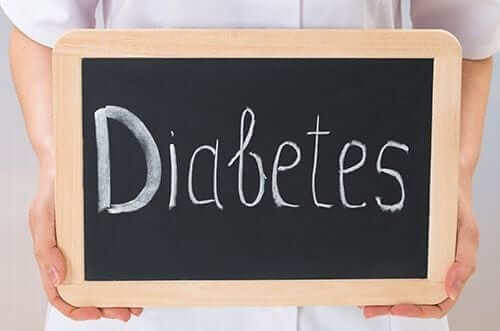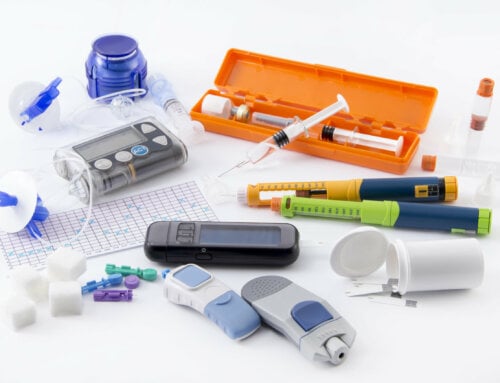At ADW, we always try to bring questions to you from a diabetes education and management practice which may address your concerns.
Here are 4 simple questions recently presented by my patients. Keep asking!
I have leg cramps especially at night when I am in bed. Is this because I have diabetes?
We always suggest you check with your health care provider about a symptom that they are not presently aware of. It may very well relate to your diabetes but it is certainly not the only reason why people suffer from nighttime leg cramps. Usually, there is no one specific reason for night leg cramps. It mostly presents in the lower leg, calf and toes. It could be related to simple muscle fatigue. Leg cramps increase with age and very often in pregnant women. Other possible causes could be peripheral vascular disease, or spinal stenosis. Spinal stenosis is the narrowing of the spinal canal which causes pressure on the nerves with pain and possible cramping. Kidney disease, anemia, cirrhosis of the liver, hyper/hypothyroidism may be the cause of leg cramps. Medications including certain blood pressure pills, cholesterol pills called statins and diuretics (water pills), asthma medicines, Parkinson’s medications and Alzheimer’s medicines may add to night leg cramps. Dehydration, nerve damage and osteoarthritis can be the reason as well.
If leg cramps are sporadic, they usually are not considered significant but if they are frequent, severe or cause leg weakness, then see a medical professional immediately.
There are easy ways to help prevent minor nighttime leg cramps. Drink plenty of fluids without caffeine to stay hydrated. Try to do a few minutes of walking in the house prior to getting into bed. Nightly stretch sessions for 5-15 minutes can be useful. Always warm and cool down when exercising vigorously during the day to prevent nighttime cramps and aches. Keep sheets and blankets loosely bound around feet at night for easy movement. Avoid high heels or inverted flat shoes which may increase cramps.
When a cramp does occur, flex your foot toward your head. Use your other foot to apply pressure or jump out of bed to flatten the foot onto the floor. Massaging the calf muscle or jiggling the legs over the side of the bed helps. Applying ice to the calf or a product called Biofreeze may numb and relieve the cramp. Using a heating pad may relax the tight muscle. Sipping diet tonic water before bed which contains a minimal amount of quinine helps many people. Quinine pills are no longer available due to multiple side effects. You may need to add magnesium and calcium supplements or foods that contain these minerals since a deficiency can cause nerve excitability and muscle stimulation. Eating apricots, nuts, greens, meat, fish and soybeans can elevate magnesium levels. Low potassium may also be a factor in night leg cramps. Eat kidney beans, sundried tomatoes, avocados, fish and winter squash for potassium. There is literature suggesting a vitamin E supplement of 400IUs daily may reduce leg cramps.
As you can see there are many reasons why you may be experiencing leg cramps. You need to figure out the cause along with your physician if they remain a chronic problem.
What is the big deal if I decide to go on a “junk binge” in the evening? I follow a healthy diet all day. It helps me take the edge off after a long, hectic and stressful day and it makes me feel happy. Is it really that bad?
Eating the nightly “junk binge” will supply that “sugar high” which is only a temporary feeling. When you eat processed carbohydrates a flood of insulin is released. Your fat cells store excess calories and multiply and get bigger. The blood sugar drops and you feel hungry, tired and down. You start the cycle by eating more and moving less. You keep the cycle of feeding the high. In the immediate, many organs are involved and suffer from this kind of eating. The mouth creates more saliva when chewing sugary processed foods. More saliva can make the food taste better which is an instant precursor to overeating. The teeth are affected since the sugar attaches to the teeth and gums and reacts with bacteria to make acid destroying tooth enamel. Tooth enamel is never replaced. When eating refined and processed carbohydrates, the gut breaks them down more quickly than foods rich in fiber so blood sugars rise and peak quicker. This will be followed by a low feeling and the desire to start eating again. The liver and the muscles store glycogen (sugar) and when they have no more storage area from overindulging the body converts the excess to fat. Obviously eating this way continuously will also affect A1C, cholesterol levels and blood pressure. It could speed up the development of neuropathy, retinopathy and nephropathy. Eating protein and fiber rich foods are a much better idea for improved blood sugar results and a limit on hunger. It will break the cycle of the “sugar high”. If you are still not clear on how to handle night time binge eating then find a dietitian or certified diabetes educator to help you. They can establish a reasonable and healthy eating plan.
I just found out that I need to start insulin injections multiple times a day! I am so afraid of needles and do not think I can give myself an injection. What can you suggest to help me?
According to a survey noted by the AADE “47% of people would be more likely to take their insulin injections more regularly if they could ease pain and discomfort”. You are not alone with this common problem.
There is a product made by Medtronic called I–Port Advance which allows you to take insulin without puncturing your skin with each injection. It is not the same as an insulin pump. It is approximately the size of a quarter and sticks to you like a bandage once it is inserted. It is worn for 3 days and will stay in place during showering, bathing and exercise. You can inject both long acting and rapid acting insulin into the same port. It is by prescription only and can work with a syringe or pen needle. There is a customer service line available to answer questions and concerns. One complete package contains an inserter and port. Once the plastic catheter is placed by the inserter, the insulin is delivered directly into the port instead of a needle stick. There are 2 choices for cannula length which should be determined by your physician. The cannula can be placed into the abdomen, thighs, back of the upper arms and the side flanks, similar to the regular injection sites. This should make taking multiple daily injections of insulin much easier and pain free.
Should I start eating cinnamon to prevent type 2 diabetes? I already have pre- diabetes. My friends all say this can do the trick.
A review of studies done in 2012 suggests “cinnamon may be helpful as a supplement to regular diabetes treatment in people with type 2 diabetes”. Research continues to offer mixed results. One theory is “it may be helpful with blood sugar control by increasing insulin action and decreasing insulin resistance”. It would be more beneficial to prevent getting type 2 diabetes by losing 5-10% of your body weight, stop smoking, controlling blood fats and blood pressure, reducing alcohol, exercising daily and practicing stress management. Putting cinnamon in your oatmeal, yogurt or coffee would not be harmful and could add flavor. If you decide to take a cinnamon supplement, please check with your physician since it could have an affect on your liver.
Hopefully, these questions have you thinking. Maybe you have learned something that you never knew. Always stay inquisitive and keep learning!
Feel free to email me your questions at [email protected] if you would like to share them with ADW diabetes.
NOTE: Consult your Doctor first to make sure my recommendations fit your special health needs.







Leave A Comment